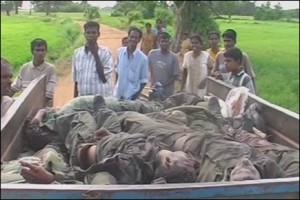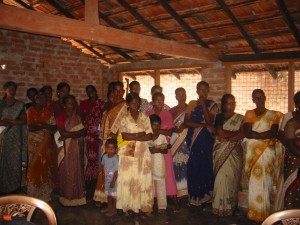Sri Lanka’s circular argument on Human Rights
When I listened to Sri Lanka’s External Affairs Minister G.L.Peiris speak on April 22,2011 at the press conference in Colombo, on the UN panel report on alleged war crimes in the last stages of Sri Lanka’s civil war I was chilled. Indeed it took be back in history 4 years ago. In 2006, the same words, that Peiris used were uttered by the government about the visit to the island nation of then UN Special Rapporteur , Philip Alston and the release of the UN Human Rights Council report on incidents of violations against civilians.
Four years later, after those violations including aerial bombardment of schools and villages and unexplained disappearances and secret detentions, under the guise of martial law went on unchecked, what is happening now in 2011 is more of the same. Another cover up for alleged actions taken by the power brokers of Sri Lanka’s government of the events that took place during the offensive – the killings, disappearances and detentions. What else can Sri Lanka’s government do but respond in this way to the impending release of a UN war crimes report. That is deny liability for the alleged war crimes and use as a cover the strategic imperative of a military campaign that was undertaken to end the conflict between the Sri Lanka government/Sri Lanka Army) and the Liberation Tigers os Tamil Eelam (Tamil Tigers).
In the press conference held by the Sri Lankan government, following the release of the UN war crimes report, Peiris continues to state publicly the party line. This has been the mantra of the Sri Lankan government since the beginning of UN involvement in Sri Lanka. He says that Sri Lanka should be “given space to deal with its own problems.” By releasing the report, the UN has now called into question itself, since it is challenging the principle of sovereign equality of UN member nations. Sadly, this argument has become a favourite of nations wishing to selectively exclude themselves from adhering to basic human rights standards and trying to get out of humanitarian obligations of the United Nations.
I worked on a humanitarian and human rights program in Eastern Sri Lanka in 2007 and 2008, during the preparation and implementation of the last offensive to beat the Tigers once and for all. This was an extremely unsettling time for Sri Lankans (Sinhala and Tamil communities), for the international community (United Nations and Non-Governmental Organisations) and for the Sri Lankan government and their politicians and international diplomats and interested states and countries. It was unsettling because little was known to the people on the ground about what was really going on in the minds of the decision makers and spoilers.
implementation of the last offensive to beat the Tigers once and for all. This was an extremely unsettling time for Sri Lankans (Sinhala and Tamil communities), for the international community (United Nations and Non-Governmental Organisations) and for the Sri Lankan government and their politicians and international diplomats and interested states and countries. It was unsettling because little was known to the people on the ground about what was really going on in the minds of the decision makers and spoilers.
While conducting mobile legal clinics to fill in applications for Tamil women and children who needed marriage and birth certificates and who were unable to get access to the Kacheri offices where they can apply for these documents, I realised that the effects of the war were going to be interminably long and sustained. The negative impact on the people’s self worth was going to be irreversible in many situations and the climb back to pride and respect for oneself an arduous journey.
(Photos by Jasteena Dhillon)
Jasteena Dhillon is an international Lawyer and legal researcher who has worked on human rights and development issues in conflict the post-conflict settings all over the world including South Africa, Balkans, Afghanistan, Iraq, Sudan and Sri Lanka . Currently, she teaches law in Toronto and previously she was was research Fellow at Harvard University

